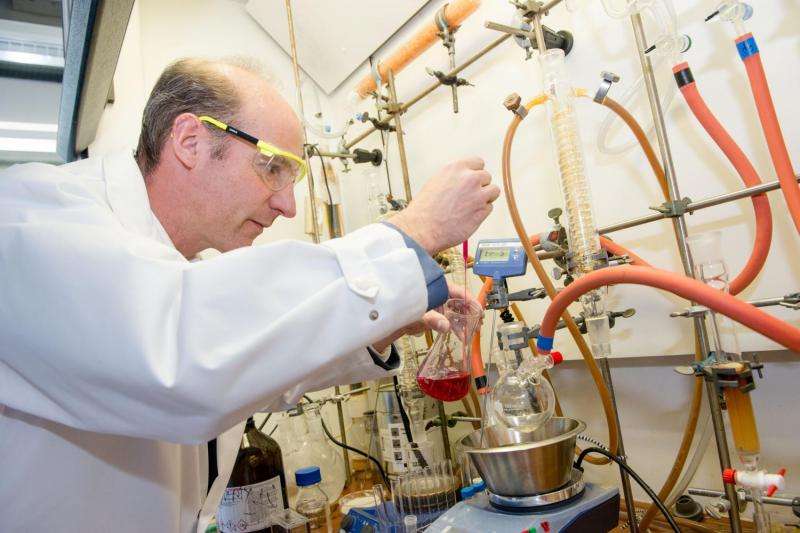Folding molecules into screw-shaped structures

An international research team describes the methods of winding up molecules into screw-shaped structures in the journal Angewandte Chemie. With the aid of artificial molecules, the researchers imitated the principles underlying the assigning a specific function to biomolecules in nature. Giving artificial molecules a specific helical shape has posed a considerable challenge, because it has been difficult to control if a molecule would wind up in the shape of a left-handed or right-handed screw. This is where the team from France, Germany and Japan made a breakthrough.
Artificial molecules are like sheets of paper. Chemists can fold them into specific shapes. Transferring the shape of one molecule to another, however, poses a significant challenge.
An international research team describes the methods of winding up molecules into screw-shaped structures in the journal Angewandte Chemie. With the aid of artificial molecules, the researchers imitated the principles underlying the assigning a specific function to biomolecules in nature.
Structure determines function of molecules
"The shape of the molecules determines their function considerably," says Prof Dr Nils Metzler-Nolte from the Ruhr-Universität Bochum, one of the team members. An example from nature: "Changes to the shape of certain enzymes cause diseases like cancer and Alzheimer's." Metzler-Nolte from the Chair of Inorganic Chemistry I collaborated with a team headed by Dr Ivan Huc and Dr Christos Tsiamantas from the Centre Nacional e la Recherche Scientifique (CNRS) and the University of Bordeaux, as well as Japanese colleagues at the University of Kumamoto.
Helix shape: a special challenge
Giving artificial molecules a specific helical shape has posed a considerable challenge, because it has been difficult to control if a molecule would wind up in the shape of a left-handed or right-handed screw. This is where the team from France, Germany and Japan made a breakthrough. Moreover, the researchers demonstrated a mechanism which can be used to make a helix transfer its handedness to another molecule through touch.
Folding molecules like a sheet of paper
The chemists worked with so-called aromatic oligoamides, i.e. aliphatic molecules derived from ammonia. Initially, the molecules assumed the shape of a straight string with knobbly protrusions. "Like a pearl necklace that lies tangled on a table," elaborates Metzler-Nolte. Subsequently, the researchers folded the molecule into the required spatial structure by integrating sulphur bridges in several positions, i.e. bonds between two sulphur atoms. "This is how we fold a molecule like a sheet of paper which is creased again and again," compares Nils Metzler-Nolte. The researchers thus created both left-handed as well as right-handed helices.
Molecules transfer their shape to each other
In additional experiments, they linked two helices with each other on both ends. Even though those were the only points of contact, the structures of the linked molecules were assimilated. Both formed either a left-handed helix or a right-handed helix.
These principles – folding and cyclisation – are used in nature; this is how biomolecules with specific properties are generated. In future studies, the researchers intend to apply these techniques to design molecules for catalysis or energy conversion.
More information: Selective dynamic assembly of disulfide macrocyclic helical foldamers with remote handedness, Angewandte Chemie International Edition, DOI: 10.1002/anie.20160115
Journal information: Angewandte Chemie , Angewandte Chemie International Edition
Provided by Ruhr-Universitaet-Bochum



















